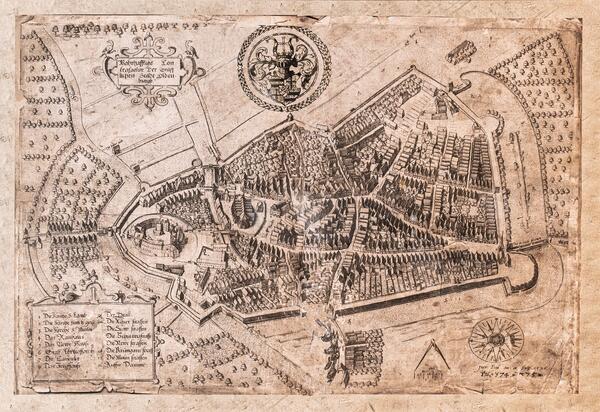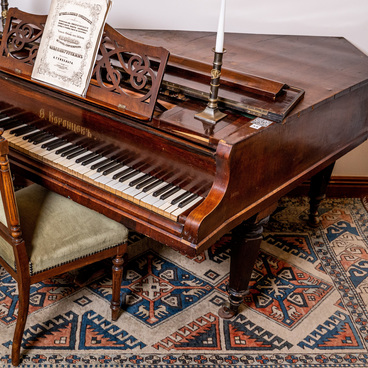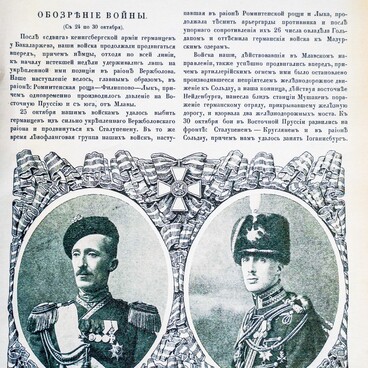The engraving depicts Oldenburg of the late 16th century. The plan shows main buildings, as well as main features of a classic German medieval city.
Cities in the Middle Ages were characterized by a vivid individuality, which was due to close dependence on their geographic location, isolation and detachment from agriculture. Convenience and safety became main conditions when choosing a place for building a city. There were general patterns to organize space and life, namely the presence of the main architectural objects: a cathedral, one or several markets, an administration building, a fortified center, external fortifications. The city was often adjoined by trade and handicraft suburbs, rural districts, where individual townspeople and the city community as a whole owned lands and holdings.
The main place in the public life of the city was the market square and the market itself. If in the first suburban merchant settlements the market gathered spontaneously along one street, then in the cities of the classical Middle Ages a place was specially allocated for it on the main street - an expanded space in the shape of a rectangle.
Walls, in turn, were an essential component of the medieval city. They not only protected the settlement, but also symbolized its freedoms and privileges. The heaviest punishment for the city was the destruction of its walls. Walls are a testament to the growth of cities. The construction of such fortifications was burdensome for the city budget, and not every city could do it. Gates were also part of the city’s fortification system. They opened and closed access to the city.
In accordance with the social hierarchy, the cathedral, town hall and market square were located at the center of the city. As a city institution, the town hall was a source of pride for townspeople, which was emphasized by its location and rich decoration. The town hall buildings had open arched galleries at the bottom, where trade usually took place. Upper floors housed meeting rooms, an office and other office space. As an extension, a town tower was adjacent to the town hall. Surveillance of the surroundings was conducted from it. In case of danger, bells on the tower sounded the alarm. Over time, large clocks began to be installed on towers, which indicated the time of work and rest, the work of the market strictly regulated by the authorities. The square was also used to host main events of city life, organize entertainment and executions.
Most influential and wealthy organizations sought to build their buildings on the square as the most prestigious place. Feudal lords, artisans and other communities living in the city also concentrated in different areas with their families. They lived in the areas of specialized markets, churches, workshops, monasteries, castles, around which people who belonged to that community settled. Workshops, shops, industrial premises and residential buildings were located nearby.



